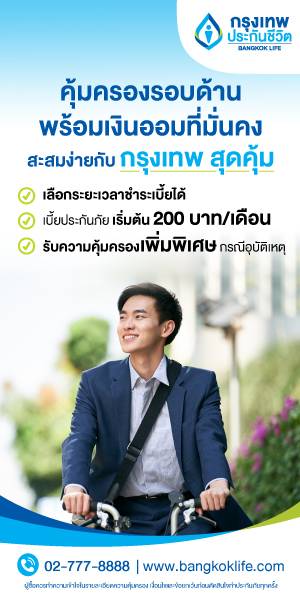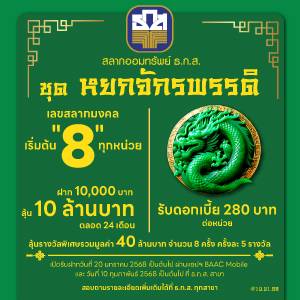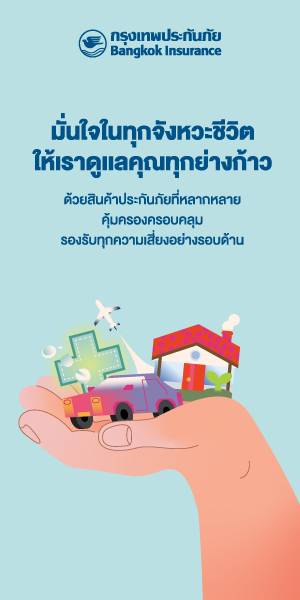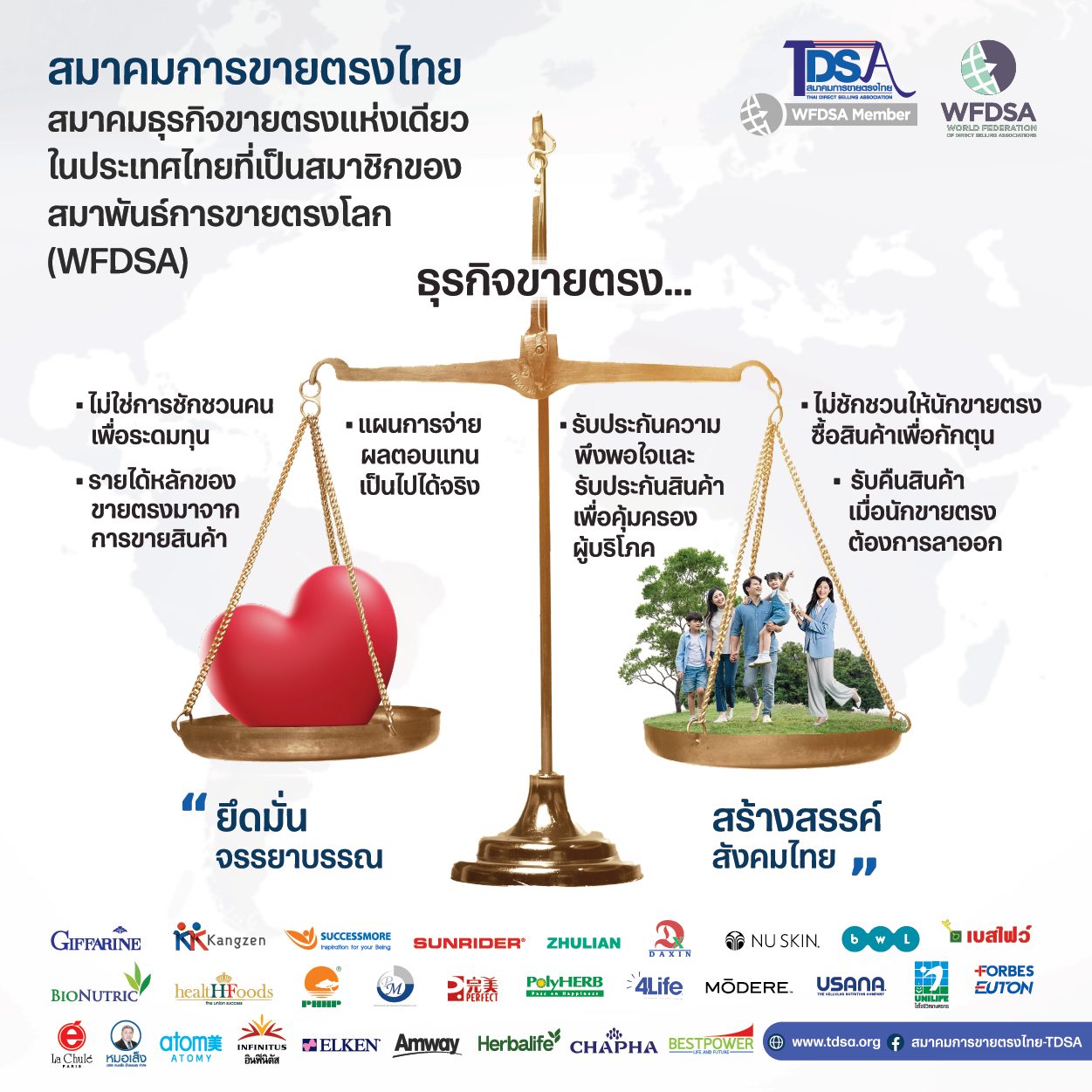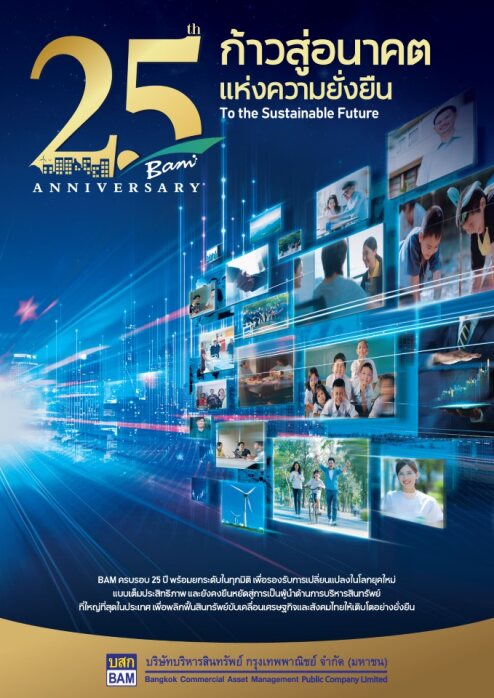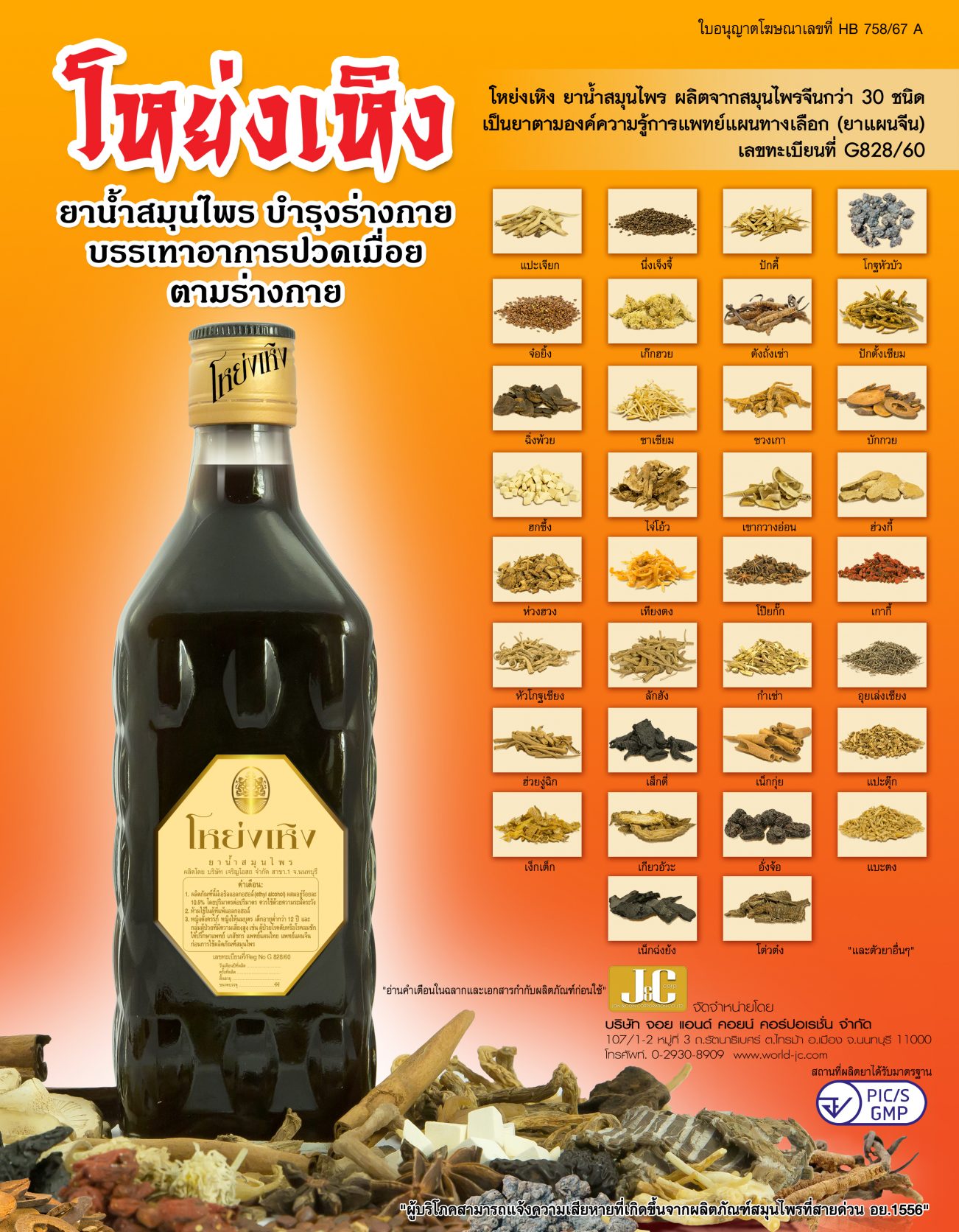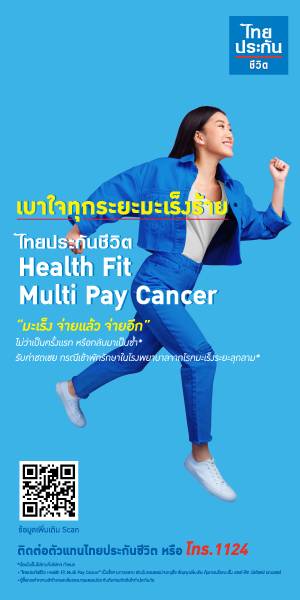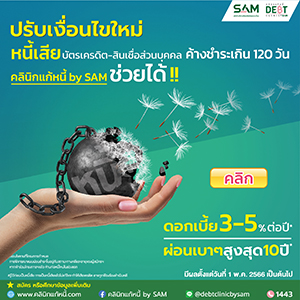เคทีซีจัดงานเสวนา KTC FIT Talks #9 จับเข่าคุยเรื่องเศรษฐกิจและธุรกิจสินเชื่อเพื่อผู้บริโภคครึ่งหลังปี 2566 โดยเชิญสถาบันวิจัยเพื่อการพัฒนาประเทศไทย (ทีดีอาร์ไอ) ร่วมวงเสวนาฉายภาพรวมและปัจจัยเสี่ยงเศรษฐกิจโลกและเศรษฐกิจไทย ต่อด้วยภาพรวมของธุรกิจสินเชื่อเพื่อผู้บริโภค ชี้เชื่อมั่นเศรษฐกิจและธุรกิจสินเชื่อเพื่อผู้บริโภคในช่วง ครึ่งปีหลังเติบโตดีกว่าครึ่งปีแรก ในขณะที่เคทีซีมั่นใจทิศทางและเป้าหมายการเติบโตธุรกิจส่งสัญญาณบวก พร้อมเผย กลยุทธ์บริหารการเงินในช่วงครึ่งปีหลัง

ดร.กิริฎา เภาพิจิตร ผู้อำนวยการ โครงการ TDRI Economic Intelligence Service (EIS) กล่าวถึงภาพรวมของเศรษฐกิจโลกและเศรษฐกิจไทยว่า “จากการประเมินหลายปัจจัย เราเชื่อมั่นว่าสภาวะเศรษฐกิจไทยครึ่งปีหลังน่าจะดีกว่าครึ่งปีแรก ในขณะที่เศรษฐกิจโลกยังคงเผชิญกับความไม่แน่นอนหลายปัจจัย ทั้งปัญหาของการถดถอยของเศรษฐกิจสหรัฐอเมริกาและยุโรป อีกทั้งความตึงเครียดทางภูมิรัฐศาสตร์ที่ทวีความรุนแรงขึ้นระหว่างจีนและสหรัฐฯ และสงครามยูเครนที่ยังไม่สงบ โดยธนาคารโลก (The World Bank) คาดการณ์ว่าเศรษฐกิจโลกจะเติบโตเพียง 2.1% ซึ่งต่ำที่สุดในรอบ 3 ทศวรรษ และอัตราเงินเฟ้อทั่วโลกในปีนี้จะอยู่ที่ 7% จาก 8.7% ในปี 2565 อีกทั้งการปรับลดการผลิตของกลุ่มโอเปค+ อาจทำให้ราคาพลังงานคงอยู่ในระดับสูง ถึงแม้ว่าราคาสินค้าโภคภัณฑ์ส่วนใหญ่ผ่านจุดสูงสุดมาแล้ว”

“ในสหรัฐอเมริกา วิกฤตการณ์ธนาคารปิดตัวยังส่งผลกระทบให้เงินฝากและสินเชื่อของธนาคารพาณิชย์ลดลงอย่างต่อเนื่อง รวมทั้งตลาดอสังหาริมทรัพย์เพื่อการพาณิชย์มีแนวโน้มชะลอตัวลดลง หลายหน่วยงานคาดว่าเศรษฐกิจสหรัฐฯ จะเข้าสู่ภาวะถดถอยในช่วงปลายปี 2566 จากวิกฤตการณ์ภาคธนาคารและการชะลอของกำลังซื้อจากอัตราดอกเบี้ยที่อยู่ในระดับสูง ในขณะที่ FED ส่งสัญญาณว่าวัฏจักรอัตราดอกเบี้ยขาขึ้นในปัจจุบันจะสิ้นสุดลงในเร็วๆ นี้ โดยธนาคารโลกคาดว่าในปี 2566 ผลิตภัณฑ์มวลรวมในประเทศ (GDP) สหรัฐฯ จะอยู่ที่ 1.1% เทียบกับปี 2565 ซึ่งอยู่ที่ 2.1% ด้านสหภาพยุโรปคาดว่า ในปีนี้ GDP จะขยายตัว 0.4% ในขณะที่ปี 2565 อยู่ที่ 3.5% และในสหภาพยุโรปมีแนวโน้มที่จะคงดอกเบี้ยในอัตราที่สูง เนื่องจากแรงกดดันด้านเงินเฟ้อยังคงขยายวงกว้าง สำหรับความเสี่ยงในภาคการเงินและอสังหาริมทรัพย์ยังคงต่ำกว่าในสหรัฐอเมริกา”

“สำหรับสภาพเศรษฐกิจของประเทศจีนกำลังฟื้นตัวอย่างค่อยเป็นค่อยไป จากการยกเลิกนโยบายปลอดโควิดและการทยอยเปิดประเทศตั้งแต่ต้นปีเป็นต้นมา อีกทั้งภาคการผลิตและบริการส่งสัญญาณฟื้นตัวในเชิงบวก และภาคอสังหาริมทรัพย์ที่เริ่มฟื้นตัวจากจุดต่ำสุด อัตราเงินเฟ้อที่น้อยกว่า 1% และค่าเงินที่มีเสถียรภาพ จึงเป็นที่คาดการณ์กันว่าเศรษฐกิจจีนจะเติบโตมากกว่า 5% ในปีนี้ ในขณะที่จีนตั้งเป้าเติบโตเพียง 5% ซึ่งอาจส่งสัญญาณถึงการเปลี่ยนแปลงนโยบายที่เน้นการเติบโตอย่างแข็งแกร่ง สู่การกำหนดเป้าหมายทางสังคมที่ดีขึ้นผ่านการจ้างงานที่มากขึ้นและกระจายตัว นอกจากนี้ จีนยังมุ่งขยายอิทธิพลไปยังตะวันออกกลางที่อาจนำไปสู่การช่วยยกระดับกิจกรรมทางเศรษฐกิจของตะวันออกกลาง และเกิดความร่วมมือกับพันธมิตรใหม่ระหว่างจีน รัสเซียและกลุ่มประเทศในตะวันออกกลาง”
“ในส่วนของเศรษฐกิจไทยในปีนี้ GDP อาจขยายตัวอยู่ที่ 3.5% จากรายรับในภาคการท่องเที่ยวระหว่างประเทศที่เป็นตัวขับเคลื่อนหลักให้เศรษฐกิจเติบโต ทั้งนี้ ธนาคารแห่งประเทศไทยคาดว่าในปี 2566 จะมีนักท่องเที่ยว 29 ล้านคน และ 35.5 ล้านคนในปี 2567 ในขณะที่มูลค่าการส่งออกจะลดลงจากปีที่แล้ว แม้การส่งออกไทยอาจได้ประโยชน์จากการเปิดเศรษฐกิจจีน แต่ยังมีความเสี่ยงจากภาวะเศรษฐกิจของตลาดส่งออกหลักที่ถดถอย สำหรับการบริโภคภาคครัวเรือนได้ฟื้นตัวต่อเนื่อง และดัชนีความเชื่อมั่นของ
ผู้บริโภคในเดือนเมษายน 2566 ขึ้นมาอยู่ในระดับสูงสุด นับตั้งแต่ช่วงก่อนเกิดโควิดในเดือนมีนาคม 2563 เนื่องจากการฟื้นตัวของภาคธุรกิจท่องเที่ยว ทำให้การว่างงานลดลง ก่อให้เกิดการสร้างรายได้จากการจ้างงานที่เพิ่มขึ้นในอุตสาหกรรมโรงแรมและภัตตาคาร การก่อสร้าง การค้าขายและการผลิต และคาดว่าการจ้างงานจะยังคงเพิ่มขึ้นต่อเนื่อง แม้ว่าจะมีความกังวลเกี่ยวกับต้นทุนการผลิตที่สูง การขึ้นค่าแรงขั้นต่ำ และความไม่แน่นอนทางเศรษฐกิจที่อาจเกิดขึ้น อย่างไรก็ตามหนี้ครัวเรือนที่สูงนับตั้งแต่สถานการณ์โควิดถึงเกือบ 90% ของ GDP ในปัจจุบัน อาจเป็นปัจจัยจำกัดการบริโภค นอกจากนี้สถานการณ์ทางการเมืองที่ยังไม่มีเสถียรภาพ อาจส่งผลให้งบประมาณปี 2567 ล่าช้า ทำให้การใช้จ่ายของภาครัฐในปี 2566 จะไม่เพิ่มขึ้นจากปี 2565 มากนัก”
“เศรษฐกิจไทยในช่วงครึ่งปีหลังจะเติบโตสูงกว่าในช่วงครึ่งปีแรก จากการฟื้นตัวของการท่องเที่ยว การส่งออกไปตลาดจีนและกำลังซื้อในประเทศ อัตราเงินเฟ้อจะชะลอตัวน้อยกว่า 2% เนื่องจากราคาพลังงานที่ลดลง แต่ยังมีแรงกดดันเงินเฟ้อจากอีกหลายปัจจัย อาทิ ต้นทุนของผู้ผลิตที่ถูกส่งต่อไปยังผู้บริโภคจากการฟื้นตัวด้านอุปสงค์ ค่าไฟฟ้าที่ปรับเพิ่มขึ้น และการขึ้นค่าแรงขั้นต่ำ แม้ว่า อัตราดอกเบี้ยนโยบายของไทยคาดว่าจะขยับขึ้นไปอยู่ในกรอบที่ 2.25% – 2.5% ในสิ้นปี 2566”

นายชุติเดช ชยุติ รองประธานเจ้าหน้าที่บริหารอาวุโส กลุ่มงานบริหารการเงิน “เคทีซี” หรือ บริษัท บัตรกรุงไทย จำกัด (มหาชน) เผยว่า “การประเมินเศรษฐกิจไทยครึ่งปีหลังมีแนวโน้มขยายตัวของทีดีอาร์ไอ เป็นไปในแนวทางเดียวกับข้อมูลของธนาคารแห่งประเทศไทย ซึ่งเป็นผลจากภาคการท่องเที่ยวที่เพิ่มขึ้น ทำให้เกิดการจ้างงานสร้างรายได้ และเชื่อว่าจะส่งผลบวกให้ภาพรวมของอุตสาหกรรมบัตรเครดิตและสินเชื่อบุคคลขยายตัวมากขึ้น โดยในช่วงไตรมาส 1/2566 เคทีซีมีสัดส่วนของลูกหนี้บัตรเครดิตเทียบกับอุตสาหกรรม เท่ากับ 14.8% อัตราการเติบโตของปริมาณการใช้จ่ายผ่านบัตรอยู่ที่ 22.5% สูงกว่าอุตสาหกรรมที่มีอัตราการเติบโตที่ 17.7% ส่วนแบ่งตลาดของปริมาณการใช้จ่ายผ่านบัตรของบริษัทฯ เท่ากับ 12.2% และมีสัดส่วนของลูกหนี้สินเชื่อบุคคลเทียบกับอุตสาหกรรมเท่ากับ 3.8%”

“การขยายตัวของภาคเศรษฐกิจในช่วงไตรมาสแรกที่ผ่านมา ส่งผลให้เคทีซีสามารถดำเนินธุรกิจได้ตามเป้าหมายที่วางไว้ และมีปริมาณการใช้จ่ายผ่านบัตรที่เติบโตอย่างเห็นได้ชัด ปัจจัยสำคัญอย่างหนึ่งก็คือ การที่รัฐบาลยกเลิกมาตรการล็อคดาวน์จาก โควิด-19 ทำให้เกิดกิจกรรมทางธุรกิจต่างๆ ส่งผลให้เศรษฐกิจในประเทศฟื้นตัว และเมื่อมีการเปิดประเทศ ได้ส่งให้การเดินทางท่องเที่ยวขยายตัวและสร้างรายได้ให้กับประเทศมากขึ้น อีกทั้งเคทีซีได้วางแผนกลยุทธ์การรุกตลาด เพื่อเตรียมรองรับการขยายตัวทางเศรษฐกิจที่จะเกิดขึ้นในอนาคต หลังการผ่อนคลายมาตรการล็อคดาวน์ โดยได้ออกบัตรเครดิตเพื่อการท่องเที่ยว 2 ใบคือ บัตรเครดิต อโกด้า มาสเตอร์การ์ด และบัตรเครดิตเจซีบี อัลติเมท อีกทั้งได้คัดสรรสิทธิพิเศษหลายรูปแบบในทุกหมวดใช้จ่ายที่สำคัญ จำเป็นและคาดว่าจะได้รับความนิยม เช่น สิทธิพิเศษด้านการท่องเที่ยว สิทธิพิเศษในหมวดร้านอาหารเพื่อผู้ที่หลงใหลในรสชาติอาหารทุกกลุ่มความต้องการ สิทธิพิเศษด้านน้ำมันและประกัน สิทธิพิเศษด้านสุขภาพและความงาม เป็นต้น”

“ทั้งนี้ ในไตรมาส 1/2566 พอร์ตสินเชื่อรวมของเคทีซีมีอัตราเติบโตจากช่วงเดียวกันของปี 2565 อยู่ที่ 14.5% โดยมีมูลค่าเงินให้สินเชื่อแก่ลูกหนี้และดอกเบี้ยค้างรับรวมเท่ากับ 103,312 ล้านบาท ในขณะที่กลุ่มบริษัทยังคงบริหารจัดการต้นทุนทางการเงินได้อย่างรัดกุมและมีประสิทธิภาพอยู่ที่ 2.6% ซึ่งอยู่ในระดับเดียวกับช่วงเดียวกันของปีก่อน และยังสามารถควบคุมคุณภาพสินเชื่อได้ดีโดยมี NPL รวมอยู่ที่ 1.9% และมั่นใจว่าจะสามารถคงคุณภาพพอร์ตรวมได้ตามเป้าหมายที่กำหนดไว้ พร้อมประมาณการกำไรของปี 2566 ที่สูงกว่าเดิม”
“เราเชื่อว่าด้วยสถานการณ์ของเศรษฐกิจที่มีแนวโน้มดีขึ้น ทั้งการจ้างงานที่เพิ่มขึ้นในอุตสาหกรรมท่องเที่ยวและธุรกิจบริการอื่นๆ จะทำให้เกิดการบริโภคในครัวเรือนและการลงทุนทำธุรกิจที่มากขึ้น รวมทั้งการเดินทางของนักท่องเที่ยวในไทยและเดินทางไปต่างประเทศ จะเอื้อประโยชน์ให้ทุกพอร์ตสินเชื่อของเคทีซีขยายตัว และมียอดการใช้จ่ายผ่านบัตรเครดิตเพิ่มขึ้น รวมทั้งธุรกิจร้านค้ารับชำระเติบโต ทั้งจากภาคอุปสงค์ในไทยที่ขยายตัว จากการใช้จ่ายในประเทศและนักท่องเที่ยวต่างชาติที่\เดินทางเข้ามาในไทย แม้ว่าอัตราดอกเบี้ยมีแนวโน้มที่จะปรับตัวสูงขึ้น ต้นทุนการเงินของบริษัทฯ ยังคงสามารถรองรับการเติบโตตามเป้าหมายได้ โดยเคทีซีตั้งเป้าการเติบโตของธุรกิจในปี 2566 ดังนี้ กำไรสูงกว่า 7,079 ล้านบาท พอร์ตสินเชื่อรวมเติบโต 15% เกินแสนล้านบาท ยอดใช้จ่ายผ่านบัตร
เครดิตเติบโต 10% พอร์ตสินเชื่อบัตรกดเงินสด “เคทีซี พราว” เติบโต 7% ยอดอนุมัติสินเชื่อ “เคทีซี พี่เบิ้ม รถแลกเงิน” เพิ่ม 9,000 ล้านบาท และ NPL น้อยกว่า 1.8% ซึ่งเป็นอัตรา NPL ในปี 2022”
“อย่างไรก็ตาม ในอีกมุมหนี่งของการทำธุรกิจที่เคทีซีคำนึงถึงมาตลอดคือ การบูรณาการกลยุทธ์ด้านความยั่งยืนให้ดีขึ้น ทั้งในมิติเศรษฐกิจ สังคมและสิ่งแวดล้อม โดยดำเนินธุรกิจด้วยความรับผิดชอบ มุ่งพัฒนาผลิตภัณฑ์ บริการ เทคโนโลยีและนวัตกรรมดิจิทัล รวมถึงบุคลากรอย่างต่อเนื่อง เพื่อตอบโจทย์ธุรกิจ สร้างความไว้วางใจให้เกิดแก่ผู้มีส่วนได้เสีย เพิ่มโอกาสการเข้าถึงผลิตภัณฑ์และบริการทางการเงินแก่สังคมไทย บรรเทาผลกระทบด้านสิ่งแวดล้อม และร่วมสนับสนุนเป้าหมายการพัฒนาอย่างยั่งยืนของสหประชาชาติ รวมถึงทุกกลุ่มบริษัทเคทีซียังดำเนินโครงการต่างๆ เพื่อช่วยเหลือลูกหนี้ตามแนวทางการบริหารจัดการด้านการให้สินเชื่ออย่างเป็นธรรม ตามประกาศของธนาคารแห่งประเทศไทยที่ยกระดับการกำกับดูแลการบริหารจัดการให้บริการลูกค้าอย่างเป็นธรรม โดยให้ความสำคัญและส่งเสริมการช่วยเหลือ ติดตาม แก้ไขปัญหาหนี้สิน เพื่อให้ความช่วยเหลือลูกหนี้รายย่อยที่ประสบปัญหาหนี้สินอย่างตรงจุดและทันท่วงที รวมถึงการพัฒนากระบวนการในการให้สินเชื่อตั้งแต่ต้นจนจบกระบวนการอย่างยั่งยืน โดยเคทีซีให้ความช่วยเหลือลูกหนี้ในทุกสถานะเป็นจำนวน 1,995 ล้านบาท คิดเป็นสัดส่วน 2.0% ของพอร์ตลูกหนี้รวม (ข้อมูล ณ วันที่ 31 มีนาคม 2566)”
 KTC x TDRI Hosted KTC FIT Talks #9: “Insights on the Thai Economy
KTC x TDRI Hosted KTC FIT Talks #9: “Insights on the Thai Economy
and the Consumer Finance Business in the Second Half of 2023”
KTC hosted KTC FIT Talks #9 forum to discuss the economic outlook and the consumer finance business in the second half of 2023. Joined by Thailand Development Research Institute (TDRI), the discussion focused on the overview and risk factors of the global and Thai economies followed by an overview of the consumer finance business, indicating that the economy and the consumer finance business in the second half of the year will be stronger than in the first half. Meanwhile, KTC revealed its financial management strategies in the second half of the year and is confident that its direction and business growth goals will be positive.
Dr. Kirida Bhaopichitr, Director, TDRI Economic Intelligence Service (EIS), TDRI discussed the overall outlook of the global and Thai economies, “According to our assessment, we believe that the Thai economy in the second half of the year will be better than the first half while the global economy continues to face many uncertainties such as issues of economic recession in the United States and Europe, the escalating geopolitical tensions between China and the United States, and the ongoing Russia-Ukraine war. The World Bank expects the global economy to grow at only 2.1% this year, the lowest in three decades, while global inflation is 7% compared to 8.7% in 2022. OPEC+ production cuts will also keep energy prices high although the most commodity prices have peaked.”
“In the United States, the collapse of banks continues to cause a drop in deposits and credits of commercial banks and a slowdown of the commercial real estate market. Many research houses expect the U.S. economy to enter a recession by the end of 2023 due to the banking crisis and a slowdown in purchasing power from high-interest rates. Meanwhile, the FED signals that the current rate-hiking cycle will soon end. The World Bank forecasts the 2023 U.S.’s real gross domestic product (GDP) growth at 1.1%, compared to 2.1% in 2022. On the other hand, The European Union’s GDP is projected to expand by 0.4% this year, compared to 3.5% in 2022, and interest rates are likely to remain high in the EU as inflationary pressures continue to broaden. The risks in the financial and real estate sectors remain lower than those in the U.S.”
“China’s economy is on track to a gradual recovery as a result of lifting its zero-COVID policy and the gradual reopening of its border earlier in the year. In addition, both the manufacturing and service sectors showed positive signs of recovery, and the real estate sector has begun to recover from its lowest point. With less than 1% inflation and a stable currency, China’s economy is expected to grow by more than 5% this year. However, the Chinese Government has a set a GDP growth target of only 5%, which could signal a policy shift from targeting strong growth to higher employment and equitable growth. Moreover, China’s rise in influence in the Middle East, could lead to greater peace and economic activity in the region, while forming new collaborations between China, Russia, and Middle Eastern countries.”
“Regarding the Thai economy this year, real GDP may expand at 3.5% with international tourism receipts as the main driver. The Bank of Thailand forecasts 29 million tourists in 2023 and 35.5 million in 2024, while the export value will decrease from last year. Although Thai exports may benefit from the reopening of the Chinese economy, there remain risks from the economic slowdown in major export markets. Household consumption has continued to recover and the Consumer Confidence Index in April 2023 reached the highest level since the pre-Covid period in March 2020. This is a result of the recovery of the tourism sector which has resulted in a decline in unemployment and income growth from increased employment in the hotel and restaurant, construction, trading, and manufacturing industries. It is expected that employment will continue to increase, although there are concerns about high production costs, minimum wage increase, and potential economic uncertainty. However, the highest increase in household debt since the COVID-19 outbreak reaching almost 90% of the current GDP will limit future consumption. In addition, the current political instability may delay the 2024 budget, hence the government spending in 2023 will not increase much from 2022.”
“The Thai economy in the second half of the year will grow faster than in the first half due to the recovery of tourism, exports to China, and domestic purchasing power. Inflation in the second half of the year will slow to less than 2% due to lower energy prices. However, there are still inflationary pressures from many factors, such as producer costs being passed on to consumers as a result of demand-side recovery, electricity price hikes, and rise in the minimum wage. Thailand’s policy rate is expected to be hiked to 2.25-2.5% by the end of the year.”
Mr. Chutidej Chayuti, Chief Financial Officer “KTC” or Krungthai Card Public Company Limited, revealed, “TDRI’s assessment of the Thai economy in the second half of the year indicates a likely expansion. This is in line with the data of the Bank of Thailand which is a result of the growing tourism sector which in turn created employment and generated income. This is believed to positively impact and grow the overall outlook of the credit card and personal loan industry. In Q1 of 2023, KTC’s percentage of credit card receivables compared to the industry was at 14.8%. The spending volume grew by 22.5%, higher than the industry’s by 17.7%. The company’s market share of card spending was 12.2% and its personal loan receivables ratio relative to the industry was 3.8%.”
“The expansion of the economic sector in the first quarter has enabled KTC to operate its business in alignment with its goals and achieve significant growth in the spending volume. One important factor was the government’s lifting of the COVID-19 lockdown measures which resulted in various business activities causing domestic economic recovery. The reopening of the country has expanded tourism and generated more income for the country. Besides, KTC has planned strategies to penetrate the market to prepare for future economic expansion after the relaxation of lockdown measures. We have issued two travel credit cards, namely the KTC – AGODA MASTERCARD and KTC JCB ULTIMATE credit cards as well as selected various privileges from all spending categories deemed important, necessary, and expected to be popular, such as travel privileges, privileges in the restaurant category covering all types of individuals who are passionate about food, fuel and insurance privileges, health and beauty privileges, and much more.”
“In Q1 of 2023, KTC’s total receivables portfolio has a growth rate at 14.5% year-over-year, with total loans to customers and accrued interest receivables of 103,312 million baht. Meanwhile, the company and its subsidiaries continue to manage financial costs prudently and efficiently at 2.6%, the same level compared to the same period last year. We are also able to control the loan quality well with a total NPL of 1.9%. We’re confident that the quality of the total portfolio can be maintained according to the target set with a higher profit forecast for 2023 than expected.”
“We believe that the improving economic situation, increased employment in the tourism industry and other service businesses will lead to more household consumption, business investment, tourists in Thailand, and international travels. These factors will benefit and push all KTC receivables portfolios to expand and increase credit card spending. Merchant businesses that accept payment gateways with grow from the expanding demand sector in Thailand, domestic spending, and foreign tourists who travel into Thailand even though interest rates are likely to rise. The company’s finance costs are still able to support the growth target. KTC’s aims for business growth in 2023 are as follows: over 7,079 million baht in profit, a 15% growth in total receivable portfolios exceeding a hundred thousand million baht, a 10% growth in credit card spending, a 7% growth in the ‘KTC PROUD’ cash card receivables portfolio, an increase of 9,000 million baht in total ‘KTC P BERM Car for Cash’ loan approvals, and NPL less than 1.8%, the same rate in 2022.”
“Another aspect of business operations that is always top of mind for KTC is better integration of sustainability strategies in the Environmental, Social, and Governance aspects. We have conducted business with responsibility with a continuous aim to develop products, services, technology, digital innovations, and personnel to meet business needs, build trust among stakeholders, increase opportunities for access to financial products and services in Thai society, mitigate environmental impacts, and support the United Nations Sustainable Development Goals. All of KTC’s subsidiaries
also carry out various projects to support debtors in accordance with fair credit management guidelines in line with the Bank of Thailand’s announcement to upgrade the supervision of management to provide
fair services to customers by prioritizing and promoting assistance, following up, and solving debt problems to offer targeted and prompt solutions to retail debtors who are facing issues of debt. This
also includes the development of a sustainable credit lending process from beginning to end. So far, KTC has assisted debtors in all circumstances in the amount of 1,995 million baht, accounting for 2.0% of the total debtor portfolio (as of 31 March 2023).”


















